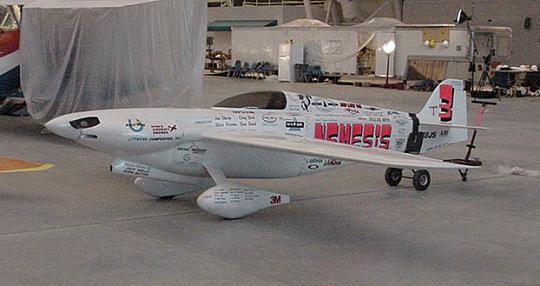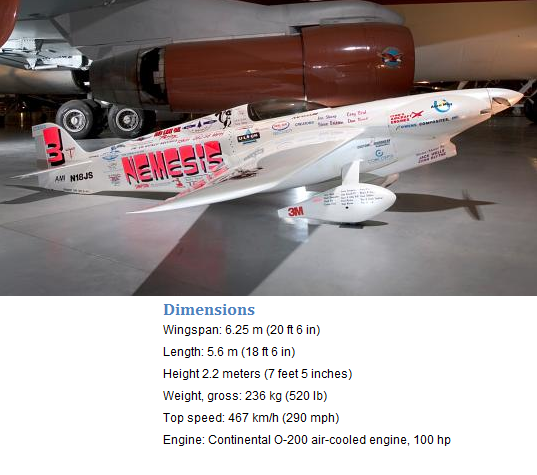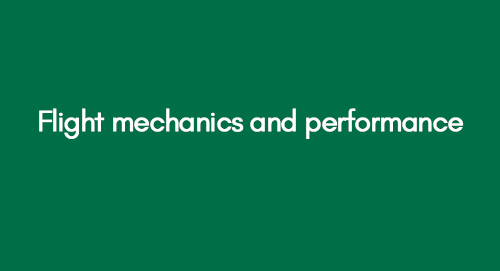
Environmental Degradation Impacts of Concrete Use in Construction
January 28, 2021
Auditorium or Ceremony Hall in the University
January 28, 2021In the boundless canvas of aviation, flight mechanics and performance paint a dynamic masterpiece, where aerodynamics and engineering choreograph the ballet of efficiency, speed, and soaring possibilities in the vast theatre of the sky.
Outline
- Introduction
- Aircraft Set-up
- Performance Parameters
- Part’s Weights Specifications
- Design Performance
- Conclusion
- References
Flight, a mesmerizing defiance of gravity that allows us to traverse the boundless skies is an extraordinary marvel of engineering and physics. The elegant glide and majestic ascent of an aircraft conceal a labyrinth of intricate principles collectively known as flight mechanics. These principles form the bedrock of aviation, governing the interaction between an aircraft and the air it navigates. The ballet of forces—lift, drag, thrust, and gravity—creates a delicate equilibrium that pilots and engineers master to achieve the seamless dance of flight. In this exploration, we journeyed through the fundamental elements of flight mechanics, unravelling the mysteries that enable us to soar through the heavens with grace and precision.
Explore More About Flight Mechanics and Performance
Within the intricate tapestry of flight mechanics, a symphony of aerodynamics, control surfaces, and propulsion systems orchestrates the breathtaking performance of aircraft. As air flows over wings, generating the essential force of lift, and engines provide the thrust necessary for propulsion, the intricate balance between these forces determines the aircraft's stability and efficiency. The nuanced choreography of three control axes—roll, pitch, and yaw—further refines the pilot's ability to command the vessel through the vastness of the atmosphere. This blog will unravel the layers of these complexities, shedding light on the factors that define the aircraft's performance in their celestial journey, from stall speeds and climb rates to the poetry of manoeuvrability and endurance. Welcome aboard as we explore the marvels of flight mechanics, unravelling the secrets behind the poetry of flight.
Introduction
With an illustrious 86-year legacy in air racing, the Formula One racing class stands as one of the most triumphant and enduring genres in aviation history. Over five decades, this category has witnessed many races, pilots, and aircraft, with the Formula 1 racing aircraft, notably the Sharp Nemesis, emerging as a distinguished and internationally recognized class. Hailing from the United States and making its mark in Europe, the Sharp Nemesis has garnered acclaim from the Federation of Aeronautics, earning the prestigious title of the world's foremost competitive vehicle in aviation history.
The Sharp Nemesis, a stalwart in the air racing community, boasts a rich history, endorsed by the Nemesis Air Racing Team as one of the most successful aircraft in air-racing annals. Despite its triumphs, the sport faces challenges, with exorbitant costs and an unsettling incidence of accidents. This dichotomy between success and impediment underscores the need to examine the Formula One racing class's trajectory comprehensively.
Participation in the National Championship Air Races demands adherence to a meticulously outlined set of rules by the management committee. These rules, continually revised and updated online, serve as the framework that ensures fair and secure competition among participants. For this case study, the spotlight is on the Nemesis aircraft, navigating the intricacies of the International Formula One Technical Rules, illuminating the symbiotic relationship between stringent regulations and the pursuit of excellence in air racing.

Figure 1- Source: National Air and Space Museum
Aircraft Set-up
Crafting an aircraft designed for competition necessitates the formulation of precise specifications, a task achieved by implementing targeted technical solutions. The comprehensive specifications for the aircraft design hinge upon the delineation of performance parameters. In the case of the Sharp Nemesis, the overarching theme centres on achieving low signatures and dedicated stealth, influencing the entire design paradigm.
Identifying and defining robust performance parameters are pivotal to developing an aircraft project. These parameters are categorized into Point Performance Parameters and Mission Performance Parameters, aligning with specific design requirements. As we delve into the intricacies of the Formula One racing class aircraft, exemplified by the Sharp Nemesis, adherence to the following specifications becomes paramount, steering the course of its design and ensuring alignment with the high standards set by the competitive aviation landscape.
Aircraft Engine Setup
Extensive research indicates that Formula One racing demands engineers specialized in the 0-200 or C series, with contestants mandated to utilize Teledyne Continental factory components and other officially approved parts. Typically, modifications to C series engines involve using approved parts to ensure parity in horsepower with the 0-200 engines. Within the Formula 1 regulations, there exists flexibility for engine workers or builders to replace or modify specific vehicle parts. However, this flexibility is constrained by the foundational approval of certain components.
Design specifications encompass critical elements such as the carburettor and induction system, with the directive to use original studs for spider mounting. The height of the spider must not exceed 3 inches or 26 mm, measured from the top of the case stud flange to the carburettor mount flange. Exhaust and intake elbows are to be positioned on the designated manufacturer's studs, and the factory can weld and remove intake premier pads for design adaptation. Furthermore, the Formula 1 regulations permit smoothing all exhaust and intake parts to meet design requirements.
Carburettor Details
The carburettor, a pivotal component subject to modifications, is exclusively restricted to Marvel MA 3 SPA-type models. Design alterations to the carburettor can encompass specific areas, including:
- Adjustment of float level by the designer's recommendations.
- Smoothing over the casting for fuel and air.
- Permission to modify the main fuel discharge nozzle, including drilling up to a maximum diameter of 0.01 inches or less.
- Utilization of approved parts for seats and needles.
- Ensuring normal operation of the accelerator pump, with allowance for cutting down the discharge tube to a maximum of 0.75 inches.
- As per design requirements, the option is to incorporate electric fuel pumps.
For comprehensive details on carburettor dimensions, the Formula 1 website offers an extensive report outlining specifications and requirements. Visiting the website thoroughly explains the intricacies associated with carburettor dimensions within the Formula One racing regulations.
Crankcase Type
The variability in the width of the crankcase, influenced by factors such as wear, finds a solution by applying shims to adjust clearance volumes. Enhancing the robustness of the C series engine crankcase involves the strategic use of bolts, achieved by drilling through the centre main bearing flange. To promote effective ventilation, the crankcase breather is mandated to be open to the external environment.
In the domain of cylinders, adherence to specific regulations is paramount:
- Exclusive use of the licensed version of 0-200 cylinders or Teledyne Continental C series engines.
- Complying with Formula One rules, the maximum volume of the cylinder is restricted to 135 cc, measured with the piston at the top dead centre.
- Ensuring that the swept per volume of the cylinder remains under 837 cc.
- Establishing specifications for the inside diameter of valve seat inserts, maintaining a threshold of less than or equal to 1.45 inches for exhaust and 1.58 inches for intake valves.
Pistons Type
Formula 1 permits the utilization of pistons from FAA PMA 0-200 and Continental C series types. In adherence to regulations, each piston must have no less than four ring grooves, and each groove must accommodate at least one piston ring. The use of pistons is unrestricted by Formula 1, with the only stipulation being compliance with the minimum weight requirement.
Smoothing Effect
Within Formula 1, smoothing external and internal forged and cast parts is permissible. Adjustments to oil lubrication holes, clearances, or fits within the engine are sanctioned to address excessive heat. For additional details, refer to the International Technical Rules outlined by Formula 1.
Camshaft Specifications
When utilizing any FAA PMA or TMC stock camshaft, adhering to the F1 technical specifications is essential. Manufacturers are permitted to measure both the exhaust valve and the intake valve. The intake measurement starts at 40 degrees Before Top Center (BTC) and must remain within the specified profile. Similarly, the measurement for the exhaust begins after the Top Dead Center at 95 degrees while staying within the specified profile.
Valve Springs use
No limitations are imposed on retainer washers, shims, valve springs, and spacers. The use of recommended and approved matching hardware and Continental springs is mandatory. The aircraft will employ the most suitable ignition systems, whether electronic or magneto ignition. There are no restrictions on the type of spark plugs and the configuration and routing of the ignition harness.
Performance Parameters
The point performance parameters are essential for individual components, requiring satisfaction for a fixed aircraft set up at a specific design point. On the other hand, mission performance parameters come into play when considering the aircraft setup within the mission context, accounting for a steady change in fuel mass. NASA has extensively utilized and published comprehensive formulas for both performance categories. Detailed illustrations of these parameters can be found in the subsequent sections (International 2007).
Point Performance Parameters
The point performance parameters for the Sharp Nemesis are employed to delineate specific scenarios involving a singular payload or fuel situation, encompassing:
- Stall speed is crucial for determining the sustainably achievable load factor.
- Takeoff run length is essential for pinpointing excess power in particular.
- Turn rate is integral for determining the landing run length accurately.
Mission Performance Parameters
Mission performance parameters are instrumental in articulating the Sharp Nemesis setup's performance parameters within the framework of its aircraft mission. This includes:
- Payload mass is employed to ascertain the aircraft's climb rate within the mission context.
- Flight range is crucial for determining the acceleration capabilities of the aircraft.
- Aircraft altitude is a key factor in determining manoeuvrability.
- Aircraft speed is an essential parameter for assessing overall performance within the mission context.
Part’s Weights Specifications
Adherence to Formula 1 Technical Rules is paramount, requiring that the weights of the parts do not surpass the specified limits. Consequently, it becomes imperative to optimize the weight of each part to align with these stipulated limits for eligibility in racing.
Specifically, the weight of FAA PMA pistons or Continental cast pistons should not exceed 670 grams, and the combined weight of wrist pins with end plugs and pistons with rings should not surpass 965 grams. The aggregate weight for all four piston assemblies must stay within the prescribed limit of 3865 grams.
For forged pistons with end plugs and wrist pins, the maximum allowable weight is set at 877 grams. On the other hand, custom-forged pistons should not surpass 610 grams individually, ensuring that the total weight for four assemblies remains equal to or less than 3508 grams.
Caution is advised when ordering oversized pistons to safeguard the cylinders, and strict adherence to specifications for swept volume is crucial. For a comprehensive understanding of weight limits for various engine parts, the Formula 1 website provides a detailed report that can be referenced.
Usage of Fuel
The Oil System
The operations of the oil system must adhere to an approved and recommended approach. The oil pump system within the engine is strictly prohibited from being supplemented by auxiliary oil systems. A comprehensive report on engine oil system requirements is available on the Formula 1 website for further details.
The Aircraft Weight
The unladen aircraft must have a minimum weight of 227 kg without including oil or fuel. In adherence to Formula 1 requirements, the pilot's weight should not exceed 160 pounds. Manufacturers are allowed to meet the stipulated minimum weight by incorporating ballast. These ballasts must be positioned within 305 mm of the seat location.
Propellers and Wings
Propellers must be fixed pitch for every operation, and using a single aluminium alloy propeller is strictly forbidden for any flight within the racing area.
The wing area should not be less than 66 square feet. This measurement does not consider stall strips and fillets but includes the area displaced by the fuselage. Flaps can be integrated into the design, but the wing area will be assessed with these flaps retracted. The ailerons must achieve perfect dynamic balance, and the sole approved method for achieving static balance will be employed.
Landing Gear
- The primary landing gear must be of a fixed and non-retractable design. The installation and testing of wheel brakes are mandatory.
- The aircraft will have two metal wheels featuring standard tire dimensions of 11.4 x 5 type, ensuring proper contact with the ground.
- Wheel fairings or pants are permitted, but their internal width should not exceed 6.5 inches. These fairings or pants must provide unrestricted access for brake and wheel inspections.
Pilot Vision and Other Specifications
By the design specifications, the pilot's vision, while wearing all safety equipment, should encompass a scanning range of 5° down over-the-nose, 25° straight down the non-canard leading edge wing, 45° vertical, and 270° horizontal visibility. The fuel tank is required to have a capacity exceeding 5 US Gallons.
The cockpit must be designed to accommodate a crash helmet, parachute, seat belt, and shoulder harness, meeting the standards set by the National Championship Air Races. The exterior vertical dimension at the cockpit should exceed 76.3 cm, with the centre of gravity positioned between 8 to 25% of the wing's Mean Aerodynamic Chord (MAC).
Moreover, the cockpit design should facilitate inside and outside openings.
Design Performance
Immediate integration of most of these performance parameters into the Formula One racing class, exemplified by the Sharp Nemesis, is not readily apparent in the current performance models. The performance characteristics necessitate the implementation of specified models through technical solutions. Evaluating quantifiable effects, such as drag, will be crucial in sorting out these technical solutions. The required performance of the Formula One Sharp Nemesis must align seamlessly with the vehicle's specifications. Developing such aircraft setups demands specific formulas and equations.
The refuelling capability of the specified Formula One racing class can be translated into specific subsystems and a refuelling probe, each possessing drag and mass properties. This integration involves aligning with specific performance parameters. The aircraft's overall configuration is shaped by various constraints encountered during the design stages. Extensive performance models are essential to address these challenges, serving as a comprehensive guide for the Formula One racing class (International 2011).

Figure21- Source: National Air and Space Museum
Conclusion
In conclusion, the Formula One racing class, exemplified by the Sharp Nemesis, encapsulates the epitome of aviation engineering and performance. This aviation discipline, spanning decades of evolution, intricately weaves together aerodynamic principles, engine dynamics, and structural design to create aircraft that defy gravity and compete at the pinnacle of speed and agility. The rigorous regulations and specifications imposed on components such as pistons, carburettors, and propellers serve as a foundation for fair competition, fostering innovation within the confines of a carefully defined rulebook.
The Formula One racing class represents a delicate equilibrium between pushing the boundaries of performance and upholding a standard of fairness. The meticulous attention to safety, reflected in cockpit requirements, vision parameters, and crash protection measures, underscores the commitment to both excellence and the well-being of the pilots. The unyielding pursuit of perfection is evident in the refinement of performance models and technical solutions and the continuous incorporation of cutting-edge technologies. As the Formula One racing class continues to evolve, it remains a testament to the relentless spirit of innovation and the boundless possibilities within the vast skies of aviation.
References
- International Formula One Procedure Rules (2007) PREPARED BY INTERNATIONAL FORMULA ONE PYLON AIR RACING INC. [Available online at] :< http://www.if1airracing.com/index_htm_files/IF1_Procedure_Rules_8-07-07.pdf> Accessed 15 April 2013
- International Formula One Procedure Rules (2011) PREPARED BY INTERNATIONAL FORMULA ONE PYLON AIR RACING INC. [Available online at] :< http://www.if1airracing.com/index_htm_files/IF1_Technical_Rules_Rev2011.pdf> Accessed 15 April 2013
- Len A. (2002) Basic setup for aircraft using 2 channels and 2 servos each for ailerons, elevators and rudders, [Available online at]: <http://s7d5.scene7.com/is/image/horizonhobby/1169-basicsetup>Accessed 15 April 2013
- NMPRA (2011) Electric Formula One Rules, [Available online at] <http://www.nmpra.org/rules/EF1NewRules_5_%5B1%5D.pdf> Accessed 15 April 2013
- Universal (2013) Improving airplane performance, [Available online at]: <http://www.rcflightschool.com/Inter_LessonsPDF/Inter_0A4-13.pdf> Accessed 15 April 2013
Get 3+ Free Dissertation Topics within 24 hours?
























